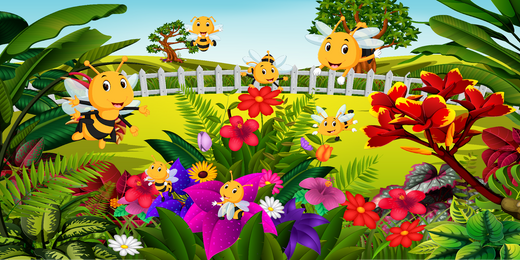
Exploring Alternative Beekeeping Methods
Let’s dive into the world of alternative beekeeping methods!
While traditional hive designs have been the go-to for beekeepers, alternative methods such as top-bar hives, Warre hives, and natural beekeeping approaches are gaining popularity. These methods focus on mimicking natural bee behavior, reducing human intervention, and promoting the well-being of our precious pollinators. Join us as we explore the fascinating world of alternative beekeeping and the benefits it offers to both bees and beekeepers.
Understanding Alternative Beekeeping Methods
Top-Bar Hives:
Top-bar hives are horizontal hives with removable bars placed across the top, from which bees build their combs. These hives mimic the natural shape of bee colonies and allow bees to build their comb according to their needs. The top-bar design encourages bees to construct smaller brood nests, which can promote more efficient colony management and reduce the risk of swarming. It also simplifies inspections, as each bar can be lifted individually, reducing disturbance to the bees.
Warre Hives:
Warre hives, also known as vertical top-bar hives, aim to provide a more natural and low-intervention environment for bees. They consist of stacked boxes, each with top bars for comb attachment. The design emphasizes minimal manipulation of the hive, allowing bees to regulate their colony temperature and comb construction more autonomously. Warre hives often employ quilt boxes or insulation to help control humidity and ventilation, creating a healthier environment for the bees.
Natural Beekeeping Approaches
Natural beekeeping methods prioritize mimicking the natural behavior of bees and minimizing human intervention. This approach emphasizes providing suitable habitat and forage, minimizing the use of chemicals or pesticides, and allowing bees to exhibit their natural instincts. Natural beekeepers focus on creating conditions that support colony health, genetic diversity, and resilience, allowing bees to adapt and thrive in their environment.
Benefits of Alternative Beekeeping Methods
Mimicking Natural Bee Behavior:
Alternative beekeeping methods aim to replicate the natural behaviors and instincts of honeybees. By doing so, they create environments that are more in tune with the bees' natural rhythms, promoting their overall well-being. Bees are given the freedom to construct comb sizes that suit their needs, regulate their colony temperature, and manage their brood more efficiently.
Reduced Stress and Swarming:
Alternative methods often result in reduced stress for the bees. With less frequent hive inspections and minimal manipulation, beekeepers can avoid disrupting the delicate balance within the colony. This, in turn, can help minimize swarming tendencies, as the bees have more control over their space and resources.
Sustainable Beekeeping:
Alternative beekeeping methods align with sustainable practices by reducing reliance on chemical treatments and promoting natural beekeeping pest control methods. These methods often prioritize organic hive management, selecting disease-resistant bee strains, and promoting diverse forage resources. By mimicking nature, beekeepers can create a more sustainable and resilient apiary system.
Increased Connection with Nature:
Alternative beekeeping methods offer a unique opportunity for beekeepers to develop a deeper connection with their bees and the natural world. By observing and understanding the bees' behavior and needs, beekeepers can appreciate the intricate interactions within the hive and gain a greater respect for the bees' role in our ecosystems. This connection can be immensely rewarding and foster a sense of stewardship for the natural environment.
Getting Started with Alternative Beekeeping
Research and Education:
Before diving into alternative beekeeping methods, invest time in research and education. Read books, attend workshops, and connect with experienced beekeepers who have successfully adopted these approaches. Understanding the principles and techniques involved will help you make informed decisions and set realistic expectations.
Hive Selection and Preparation:
Choose a hive design that aligns with your beekeeping goals and preferences. Whether it's a top-bar hive, Warre hive, or another alternative design, ensure you have the necessary equipment and knowledge to set it up properly. Consider factors such as hive placement, insulation, and ventilation to create a suitable environment for your bees.
Patience and Observation:
Alternative beekeeping methods often require a more patient and observant approach. Allow the bees to guide their own progress and avoid unnecessary interventions. Spend time observing their behavior, learning their communication signals, and understanding their needs. This hands-off approach promotes a deeper understanding of the bees' natural instincts and rhythms.
Seek Community an d Mentorship:
Connect with other alternative beekeepers in your area or join online communities dedicated to these methods. Sharing experiences, exchanging ideas, and seeking mentorship can provide invaluable support and guidance throughout your journey. Experienced beekeepers can offer insights, troubleshoot challenges, and inspire you to grow as a beekeeper.
Alternative beekeeping methods, such as top-bar hives, Warre hives, and natural beekeeping approaches, offer exciting opportunities to connect with nature and promote the well-being of our cherished honeybees. By mimicking natural bee behavior, reducing human intervention, and embracing sustainable practices, beekeepers can create environments that benefit both bees and the surrounding ecosystem.
So, whether you're intrigued by the simplicity of top-bar hives, the autonomy of Warre hives, or the natural beekeeping philosophy, consider exploring these alternative methods. Embrace the wisdom of nature and embark on a beekeeping journey that nurtures the remarkable world of honeybees



Leave a comment